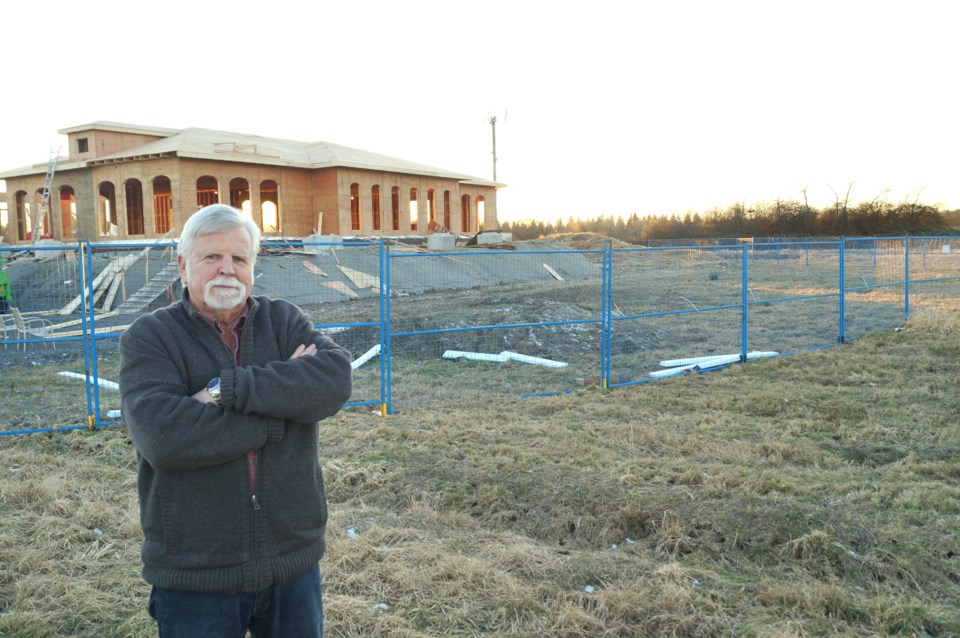As the City of Richmond looks to Delta for guidance on how to control the size of homes on protected agricultural land, it’s a day late and a buck short for long-time resident John Baines.
“It’s interesting and shocking what’s going on,” said Baines, overlooking a “ridiculous” 22,000-square-foot home under construction at No. 4 Road, immediately south of Steveston Highway.
Baines lives down the road from the new home, which is located on a 6.3-acre lot. At the side of the road, outside the construction fencing, he points to four concrete walls being erected on the south wing of the house.
“Kind of looks like a home theatre,” he tells the Richmond News.
Baines considers the home a “function of the lack of zoning policy of Richmond city council.”
That lack of function may soon come to an end as council considers a new bylaw amendment that aims to eliminate mega homes on farmland, many of which are known to operate as illegal hotels and also call into question council’s stated intentions of protecting some of the most fertile soils in Canada.
“I guess the biggest problem is, it puts the price of farmland far out of reach of anyone who wants to farm,” said Baines.
The lot is valued at $4.1 million. The building permit indicates the construction value of the house is valued at $2.5 million.
A report to council’s planning committee Tuesday outlines four options for bylaw amendments that will limit the size of such homes.
Coun. Harold Steves expects the report to be accepted by the committee in order to go to public consultation.
The most restrictive bylaw proposal mirrors the Corporation of Delta, which states no home can be greater than 3,552-square-feet on lots less than 20 acres, or 5,005 acres on lots greater than 20 acres.
Council will also address the size of “home plates” of farm lots, which incorporate such things as accessory buildings, farmworker houses, driveways and landscaping features.
As noted in the report, in 2010, the average house in the Agricultural Land Reserve within Richmond was about 7,300-square-feet; by 2015 it was about 12,000-square-feet.
Last year, city staff denied a building permit for a 41,000-square-foot home.
Richmond is one of few Metro Vancouver cities without absolute limits for house sizes on farmland. Historically, larger homes on farmland had been accepted, especially in Richmond where predominantly Indo-Canadian multi-generational families have produced crops. Furthermore, larger homes, as well as secondary homes on the same lot, have been considered acceptable for seasonal farm labourers.
Steves said race has played a factor in public policy planning in the past, noting there were charges of racism against council a few years back when council attempted to limit the size of ALR homes, as is being attempted now.
The staff report indicates, “the issue of regulating house size, farm home plate and setbacks, as well as the size of residential accessory buildings in the ALR, is anticipated to be controversial.”
That said, Steves said he thinks the issue has gotten so out of hand that he doesn’t think there will be as much opposition as there was in past years.
“It will depend if those selling farmland for big prices will want to fight back,” said Steves.
A public consultation open house is expected; a public hearing at city hall would follow.



